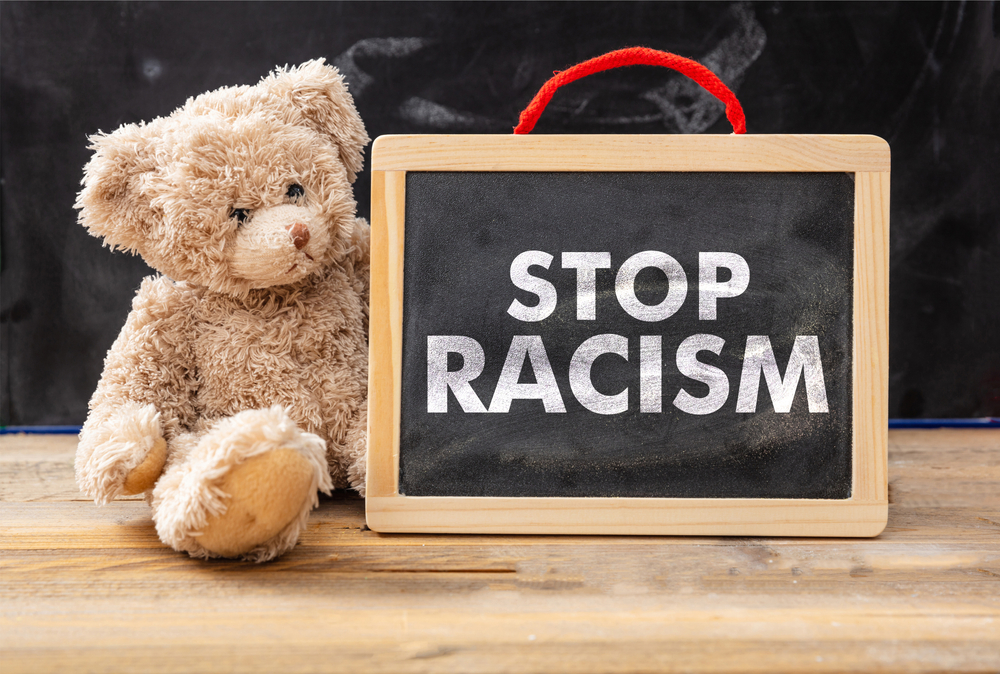
15 Jun How to Talk to Your Kids About Racism
“We must dismantle racism at every level, from individual to institutional to systemic.” This is a quote from a policy statement on racism by Dr. Nia Heard-Garris and Dr. Jaqueline Dougé of the American Academy of Pediatrics. According to the American Academy of Pediatrics, “Racism’s societal impact, particularly on communities of color and populations that are historically disenfranchised, is wide-reaching, systemic, and complex. A growing body of scientific research has found that racism harms children’s mental and physical health in myriad ways…and we cannot ignore the impact.” Furthermore, the American Academy of Pediatrics President Dr. Sally Goza firmly states that “our children’s future will be built on these moments of reckoning.”
The work of dismantling racism and inequality must be not only in protests, polls, donations, economic investment, education, and reform but also at home with our families.
However, it might feel like the path to community engagement is clearer than the path of how to talk to our children about difficult topics like racism, racial bias, and inequality. Hesitation can come from fear of saying or doing the wrong thing, not having the language to start this kind of conversation, not having any experience in having conversations about race and inequality, or being concerned that we might expose our children to something scary or upsetting that they will not be able to process.
Because North Shore Family Services believes in encouraging, engaging, and empowering our clients, families, and communities to hold difficult and uncomfortable conversations, providing an open space to process events and bring about positive change to repair the world, we have developed resources to help with these concerns. Review the information, tips, and resources below to learn how to start meaningful conversations with your children about racism, racial bias, and inequality.
How Do Children Learn About Bias, Racism, and Equity?
In short, they are listening. They are listening to what their parents, caregivers, and other trusted adults say. They may hear things from their peers and friends, and they will most certainly take in information from all kinds of media sources. The way children learn and understand bias and racism changes over time: at 6 months, a baby can notice race-based differences in individuals; between the ages of 2 and 4, children can begin to internalize learned racial bias; and children’s beliefs begin to become set around age 12. While children can certainly be influenced after age 12, the process of changing a child’s concepts of racism and bias will become more difficult after this age. This means that parents’ best opportunities to teach their children to confront and reject bias and racism are roughly within the first decade of life!
Below are some tips from the American Academy of Pediatrics on how to talk about racial differences and racism:
Preschoolers: Your child may notice differences between themselves and people around you. If your child asks about these differences, talk about them in a positive, inclusive manner with statements like, “Isn’t it great how everyone is so different!” You can also use differences between people in your own family to demonstrate how people can be different in some ways and similar in others.
Grade Schoolers: Open talks with your child regarding race, diversity, and racism become important during this stage. You can demonstrate to your child that you are a trusted source of information and a nonjudgmental place for them to ask questions. You can use media to point out stereotypes and racial bias that exist in our society and model how to challenge these stereotypes to your child.
When Your Child Asks About Incidents of Racism, keep the discussion going with prompts such as “How did that make you feel” and “Help me understand your thinking.” Be sure to try to take your child’s perspective and keep the objective of challenging racial bias and racism at the forefront of the conversation.
Be aware of your own emotions during these conversations. If you are struggling with your own feelings, it may be best to take some time to sort those feelings out or seek your own support before beginning an important conversation with your child. This is important to ensure you are able to be a calm, safe space for your child to learn and express their concerns.
Teach your child how to make a positive difference. Use these conversations not only to highlight racial bias and racism, but also to discuss ways your family can get involved in advocacy and change, such as donations, protesting, calling officials, etc., as well as how your family can confront their own biases.
Use Resources. There are so many books, podcasts, TED talks, blogs, and websites with a wealth of resources for you to consider utilizing in your discussions about racial bias, racism, and inequality with your child. There are links below to myriad resources.
- Talking to Kids About Racism (NY Times)
- Anti-Racism for Kids: An Age-by-Age Guide to Fighting Hate (Parents.com)
- Resources for Talking Race, Racism, and Racial Violence with Kids (Center for Racial Justice in Education)
- Racism Town Hall (CNN/Sesame Street)
- How to Raise Anti-Racist Kids: 20 Resources for Parents (Mother.ly)
- Talking to Children about Racism: The Time is Now (AAP)
- Children’s Books That Discuss Race & Racism (Brittany Smith, Pre-K Teacher)
- How White Parents Can Talk to Their Kids About Race (NPR)
- Talking to Children about Racial Bias (AAP)
- How to Teach Kids to Talk About Taboo Topics (Liz Kleinrock)
- Talking to Kids About Racism, Early and Often (NY Times)These Books Can Help You Explain Racism and Protest to Your Kids (NY Times)
As Dr. Joseph Wright of the American Academy of Pediatrics stated, “these are conversations many African-American families have had to have for generations. If this is not something other families have discussed yet, what is happening right now is an essential and unavoidable, teachable moment. If we are to progress in this country, it’s going to be because we help our children, adolescents and young adults learn not just that racism exists, but that it is something all of us can work together to dismantle.”

North Shore Family Services is a team of skilled and approachable therapists that help parents, children, teens, adults, and couples reduce anxiety and stress, learn effective problem-solving techniques, and manage emotions and behaviors that inhibit personal, school, family, and relationship success. We make therapy a productive, engaging and relaxing place for everyone to work hard and make the improvements they desire. To find the right-fit therapist for you and your family, visit our clinician’s page.



Sorry, the comment form is closed at this time.